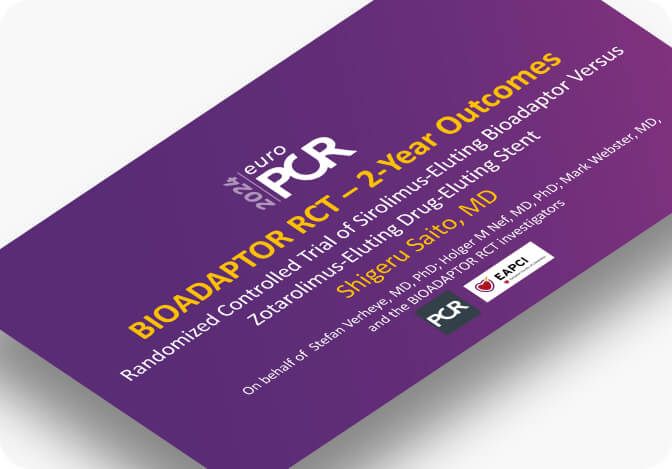DynamX Bioadaptor matched the acute performance of Resolute Onyx DES
DynamX vs. Resolute Onyx
Device and Lesion Success Rates


The first device with RCT data demonstrating significantly better effectiveness in early RETURN of vessel function and stabilization of plaques vs. state-of-the-art drug-eluting stent (DES)
Primary endpoint: target lesion failure at 12 months vs. 2.8% for Resolute Onyx™
(p < 0.001)
Increase in blood flow with every heartbeat, as pulsatility returns
Plaque volume regression in lipid rich lesions vs. +10% for DES
(p = 0.008)
Significant TLF Reduction Driven by Lower CVD, TVMI, TLR
*Chi-square test. Per Protocol Population

Department of Cardiology, Iryohojin Tokushukai Shonan Kamakura General Hospital, Kamakura City, Japan

Department of Cardiology and Angiology, University of Giessen, Giessen, Germany

Interventional Cardiology, ZNA Cardiovascular Center Middelheim, Antwerp, Belgium

Cardiac Investigation Unit, Auckland City Hospital, Auckland, New Zealand

Learn more about the DynamX® bioadaptor in action.
Read the Publication
Learn about the excellent DynamX® clinical outcomes at two years.
Review the Slides
Find the DynamX® bioadaptor size matrix.
See the size matrix
Get the DynamX® Coronary Bioadaptor System technical specifications.
See the specifications